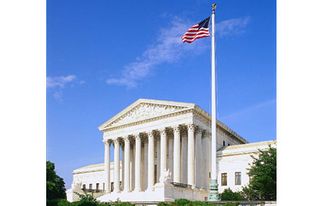By Jude Biggs
In a favorable ruling for employers, on June 24 the U.S. Supreme Court held that a retaliation claim under Title VII of the Civil Rights Act of 1964 requires an employee to show the employer’s desire to retaliate was the “but-for” cause of the challenged employment action. University of Texas Southwestern Medical Center v. Nassar, No. 12-484 (U.S. June 24, 2013). This establishes a different causation standard for retaliation claims than is required for underlying Title VII discrimination claims, which only require an employee to show the motive to discriminate was one of the employer’s motives in making an adverse decision. Although cumbersome to have two standards, the decision is good news for employers, as often a jury will not find any discrimination by an employer, but may find retaliation after an employee speaks up about alleged discrimination. Making it more difficult to prevail on a retaliation claim will, hopefully, encourage plaintiffs to bring fewer cases or resolve them earlier than going through an expensive trial.
Employee Must Prove Employer Would Not Have Taken Action But For an Improper Motive
In a 5-4 decision, the Supreme Court ruled a plaintiff making a retaliation claim under Title VII must establish that the employer would not have taken the alleged adverse employment action but for the plaintiff having engaged in protected activity. Protected activity that may trigger a retaliation claim includes the employee opposing, complaining of or participating in a proceeding about unlawful discrimination in the workplace. Through this ruling, the Court instructs that retaliation claims should fail if an employer had other reasons or motivations – singly or together — that caused the employer to take the adverse action (even if one other factor was retaliatory in nature). In less legal terms, the employer wins if it can show its non-retaliatory reasons caused it to make the decision, even if a small portion of the decision was based on retaliation against the employee for engaging in protected conduct.
Justice Kennedy, writing for the majority which included Justices Roberts, Scalia, Thomas and Alito, stated that the text of Title VII’s anti-retaliation provision appears in a different section of the law from the provision that prohibits discrimination based on race, color, religion, sex or national origin. When Congress inserted the less rigorous “motivating factor” standard for discrimination cases in 1991, it could have inserted that standard into the anti-retaliation provision. In choosing to omit it, Congress deliberately concluded that retaliation claims are to be treated differently and retaliation is unlawful only when the employer takes adverse action against an employee “because” of their protected activity. The Court pointed to its interpretation of the Age Discrimination in Employment Act of 1967 in Gross v. FBL Financial Services, Inc. to require “but for” causation for retaliation claims.
The Court also stated that this causation standard is essential to the fair and responsible allocation of judicial resources. Recognizing that retaliation claims have been on the rise, the Court recognized that lessening the causation standard could contribute to the filing of frivolous claims, diverting resources from employers, agencies and courts in other efforts to fight workplace harassment.
Dissent Urges Congressional Action
Justices Ginsburg, Breyer, Sotomayor and Kagan dissented, alleging that fear of retaliation is the leading reason why employees do not speak up about discrimination in the workplace. Because Title VII plaintiffs often have been subjected to both discrimination and retaliation, they now will have to litigate their claims under two standards: (1) discrimination under the “motivating factor” test which requires a plaintiff to show only that a prohibited characteristic was a motivating factor in the employer’s adverse action, even if other factors also motivated the action; and (2) retaliation under the “but for” standard which requires a plaintiff to show that the employer would not have taken the adverse action but for a retaliatory motive. The dissent concluded that this decision is at odds with a line of previous decisions that recognize retaliation claims are inextricably bound up with an underlying discrimination claim. Justice Ginsburg, writing the dissenting opinion, stated “the Court appears driven by a zeal to reduce the number of retaliation claims filed against employers.” Calling the majority decision “misguided,” the dissent urges Congress to enact another Civil Rights Restoration Act to counter and remedy the injustice done by the majority opinion.
Employers May Face Fewer Retaliation Claims or At Least, Fewer Successful Claims
In practice, it is questionable how relevant the causation standard may be to potential litigants of retaliation claims. Employees believing they have been wronged after they complain about discrimination will likely still file retaliation claims, no matter what causation standard applies. Juries often will conclude retaliation occurred based on a general “fairness” standard. However, employers may be able to resolve such claims at the summary judgment stage (when a court decides a claim does not merit a trial), because proof of other factors that contributed to the adverse employment decision will defeat the retaliation claim.
Disclaimer:This article is designed to provide general information on pertinent legal topics. The statements made are provided for educational purposes only. They do not constitute legal advice and are not intended to create an attorney-client relationship between you and Holland & Hart LLP. If you have specific questions as to the application of the law to your activities, you should seek the advice of your legal counsel.




![MH900438796[1] MH900438796[1]](https://www.employerslawyersblog.com/wp-content/uploads/2013/06/6a013486823d73970c0192aaf7d2f9970d-250wi.jpg)